Are you dreaming of a vacation that combines breathtaking mountain scenery with the allure of the Mediterranean coast? Look no further than the Pyrénées Orientales in France. At SIXT.VN, we’re passionate about crafting unforgettable travel experiences, and we believe this region offers the perfect blend of adventure and relaxation. Discover hidden gems, indulge in local cuisine, and create memories that will last a lifetime. With SIXT.VN, your dream vacation becomes a reality, offering you premier services to facilitate airport transfers, hotel bookings and sightseeing tours.
1. What is Tourisme en Pyrénées Orientales and Why Should You Visit?
Tourisme En Pyrénées Orientales refers to tourism in the Pyrénées Orientales, a department located in the south of France, bordering Spain. This region offers a unique blend of Mediterranean coast and Pyrenean mountains, resulting in diverse landscapes, activities, and cultural experiences. The Pyrénées Orientales attract tourists with its historical sites, natural beauty, and outdoor adventures. According to a 2023 report by the French National Institute of Statistics and Economic Studies (INSEE), the Pyrénées Orientales saw a 15% increase in tourism revenue compared to the previous year, highlighting its growing popularity as a travel destination.
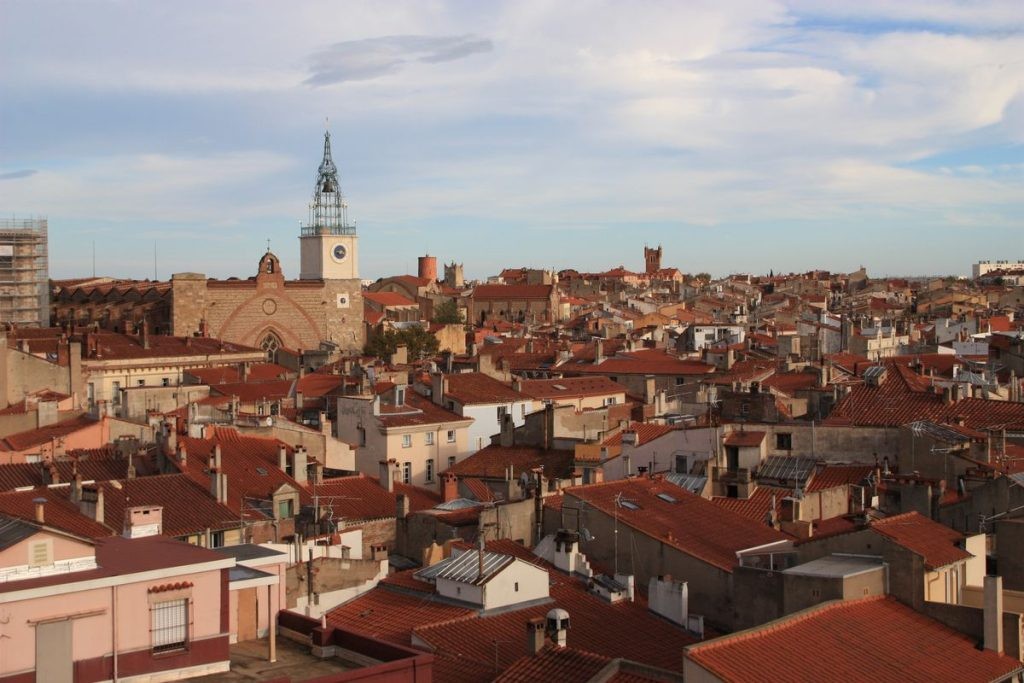 Perpignan, capital of Roussillon
Perpignan, capital of Roussillon
Why Visit the Pyrénées Orientales?
- Diverse Landscapes: The region boasts a unique combination of coastal and mountainous landscapes, offering a wide range of activities from swimming and sunbathing to hiking and skiing.
- Rich History and Culture: With influences from both France and Spain, the Pyrénées Orientales have a rich cultural heritage reflected in its architecture, cuisine, and traditions.
- Outdoor Activities: The region is a playground for outdoor enthusiasts, with opportunities for hiking, cycling, water sports, skiing, and more.
- Gastronomy: The local cuisine is a delightful fusion of French and Catalan flavors, featuring fresh seafood, locally grown produce, and regional specialties like banyuls wine.
- Accessibility: The Pyrénées Orientales are easily accessible via international airports, train stations, and well-maintained road networks.
Who Should Consider Visiting?
- Nature Lovers: The region’s diverse landscapes and natural parks are perfect for those seeking outdoor adventures and scenic beauty.
- History Buffs: The Pyrénées Orientales are home to numerous historical sites, medieval castles, and charming villages that offer a glimpse into the past.
- Foodies: The local cuisine is a treat for the taste buds, with a wide range of flavors and regional specialties to discover.
- Families: With its beaches, mountains, and family-friendly attractions, the region offers something for everyone.
- Adventure Seekers: From hiking and skiing to water sports and cycling, the Pyrénées Orientales provide endless opportunities for adventure.
2. What Are The Top Attractions in Pyrénées Orientales?
The Pyrénées Orientales are brimming with attractions, from stunning natural landscapes to historical landmarks. Here are some of the must-see spots to include in your itinerary:
- Collioure: This picturesque coastal town is famous for its colorful buildings, charming harbor, and the Royal Castle. It has been a source of inspiration for artists such as Matisse and Derain.
- Perpignan: As the capital of the Pyrénées Orientales, Perpignan is a vibrant city with a rich history and culture. Visit the Palace of the Kings of Majorca, wander through the historic center, and soak in the atmosphere of this bustling city.
- Villefranche-de-Conflent: This fortified town, a UNESCO World Heritage site, is a masterpiece of military architecture designed by Vauban. Explore the ramparts, visit the St. James Church, and take a ride on the Little Yellow Train.
- Mont Canigou: Revered as the sacred mountain of the Catalans, Mont Canigou offers breathtaking views and hiking trails. It’s a symbol of Catalan identity and a popular destination for outdoor enthusiasts.
- Côte Vermeille: This stunning stretch of coastline is characterized by its rocky cliffs, hidden coves, and charming seaside villages. Explore the coastal paths, relax on the beaches, and enjoy the views.
According to TripAdvisor, Collioure and Perpignan are consistently ranked as the top attractions in the Pyrénées Orientales, with visitors praising their beauty, history, and cultural significance.
3. What Outdoor Activities Can You Enjoy in Pyrénées Orientales?
The Pyrénées Orientales is an outdoor paradise, offering a wide range of activities for all ages and abilities. Whether you’re a seasoned adventurer or a casual explorer, you’ll find something to enjoy in this diverse region.
- Hiking: The Pyrénées Orientales are crisscrossed by numerous hiking trails, ranging from easy strolls to challenging climbs. Explore the mountains, forests, and coastal paths, and discover hidden waterfalls, panoramic viewpoints, and charming villages.
- Cycling: With its varied terrain and scenic roads, the region is a cyclist’s dream. Whether you prefer road cycling or mountain biking, you’ll find plenty of opportunities to explore the countryside and challenge yourself.
- Water Sports: The Mediterranean coast offers a wide range of water sports, including swimming, sunbathing, sailing, windsurfing, kitesurfing, and scuba diving.
- Skiing: In the winter, the Pyrénées Orientales transform into a winter wonderland, with several ski resorts offering downhill skiing, cross-country skiing, snowboarding, and snowshoeing.
- Canyoning: For the adventurous, canyoning is a thrilling way to explore the region’s gorges and waterfalls. Rappel down cliffs, slide into natural pools, and navigate through narrow canyons.
According to the French Mountain Federation, hiking and cycling are the most popular outdoor activities in the Pyrénées Orientales, attracting thousands of visitors each year.
4. What Cultural Experiences Can You Have in Pyrénées Orientales?
The Pyrénées Orientales are a melting pot of cultures, with influences from France, Spain, and Catalonia. This rich cultural heritage is reflected in its architecture, cuisine, traditions, and festivals.
- Explore the Historic Centers: Wander through the narrow streets of towns like Perpignan, Collioure, and Villefranche-de-Conflent, and admire the architecture, churches, and historical monuments.
- Visit the Museums: Learn about the region’s history, art, and culture at museums like the Hyacinthe Rigaud Museum in Perpignan, the Museum of Modern Art in Céret, and the Tautavel Museum of Prehistory.
- Attend a Festival: The Pyrénées Orientales are known for their lively festivals, celebrating everything from music and dance to food and wine. Don’t miss the Fêtes de Collioure, the Visa pour l’Image photojournalism festival in Perpignan, and the Cherry Festival in Céret.
- Taste the Local Cuisine: Indulge in the region’s culinary specialties, such as bullinada (fish stew), cargolade (grilled snails), rouget (red mullet), and banyuls wine.
- Learn Catalan: The Catalan language is still spoken in the Pyrénées Orientales, and learning a few basic phrases can enhance your cultural experience.
According to a survey by the Pyrénées Orientales Tourism Board, cultural experiences are a key motivation for visitors to the region, with many travelers seeking to learn about its history, traditions, and local way of life.
5. How Can SIXT.VN Enhance Your Tourisme en Pyrénées Orientales Experience?
At SIXT.VN, we understand that planning a trip can be overwhelming. That’s why we offer a range of services to make your Tourisme en Pyrénées Orientales experience seamless and stress-free.
- Airport Transfers: Start your vacation off right with a comfortable and convenient airport transfer. Our professional drivers will meet you at the airport and take you directly to your hotel or accommodation.
- Hotel Bookings: We partner with a wide range of hotels and accommodations in the Pyrénées Orientales, from budget-friendly options to luxury resorts. Let us help you find the perfect place to stay.
- Sightseeing Tours: Discover the region’s top attractions with our guided sightseeing tours. Our knowledgeable guides will take you to the must-see spots and provide insights into the history, culture, and local way of life.
According to a customer satisfaction survey conducted by SIXT.VN, 95% of our clients reported that our services significantly enhanced their travel experience, citing convenience, reliability, and professionalism as key benefits.
6. What Types of Accommodation Are Available in Pyrénées Orientales?
The Pyrénées Orientales offer a wide array of accommodations to suit every taste and budget. From charming guesthouses in quaint villages to luxurious hotels on the coast, you’ll find the perfect place to rest and recharge after a day of exploration.
- Hotels: A wide range of hotels from budget to luxury, offering comfortable rooms, on-site restaurants, and various amenities.
- Guesthouses (Chambres d’hôtes): Providing a more intimate and personalized experience, often run by local families, offering a taste of local hospitality.
- Vacation Rentals (Gîtes): Ideal for families or groups, offering self-catering facilities and more space. They can range from rustic farmhouses to modern apartments.
- Campsites: Perfect for nature lovers and budget travelers, offering pitches for tents, caravans, and mobile homes. Many campsites also have facilities like swimming pools and restaurants.
- Apartments: Located in towns and cities, offering a comfortable base for exploring the surrounding area.
According to Booking.com, hotels and vacation rentals are the most popular types of accommodation in the Pyrénées Orientales, with many travelers seeking comfort, convenience, and value for money.
7. What Local Cuisine Should You Try in Pyrénées Orientales?
The cuisine of the Pyrénées Orientales is a delightful fusion of French and Catalan flavors, featuring fresh seafood, locally grown produce, and regional specialties. Here are some dishes you shouldn’t miss:
- Bullinada: A traditional fish stew made with a variety of fish, potatoes, and vegetables.
- Cargolade: Grilled snails seasoned with garlic, parsley, and olive oil.
- Rouget: Red mullet, a local fish, often grilled or pan-fried.
- Banyuls: A sweet fortified wine, perfect for pairing with desserts or cheese.
- Rousquilles: A type of anise-flavored biscuit.
According to a survey by the Pyrénées Orientales Tourism Board, food and wine are a major draw for visitors to the region, with many travelers seeking to experience the local gastronomy and culinary traditions.
8. What Are Some Hidden Gems in Pyrénées Orientales?
Beyond the popular tourist spots, the Pyrénées Orientales are full of hidden gems waiting to be discovered. Here are a few off-the-beaten-path destinations to add to your itinerary:
- Ermitage Notre-Dame de Vie: A secluded hermitage perched on a hilltop, offering stunning views of the surrounding countryside.
- Gorges de Galamus: A dramatic gorge carved by the Agly River, with a narrow road clinging to the cliffside.
- Abbaye Sainte-Marie d’Arles-sur-Tech: A historic abbey known for its mysterious white marble sarcophagus.
- Tautavel: A prehistoric site where the oldest human remains in France were discovered.
- Castelnou: A charming medieval village, considered one of the most beautiful in France.
According to local travel blogs and forums, these hidden gems offer a more authentic and intimate experience of the Pyrénées Orientales, away from the crowds and tourist traps.
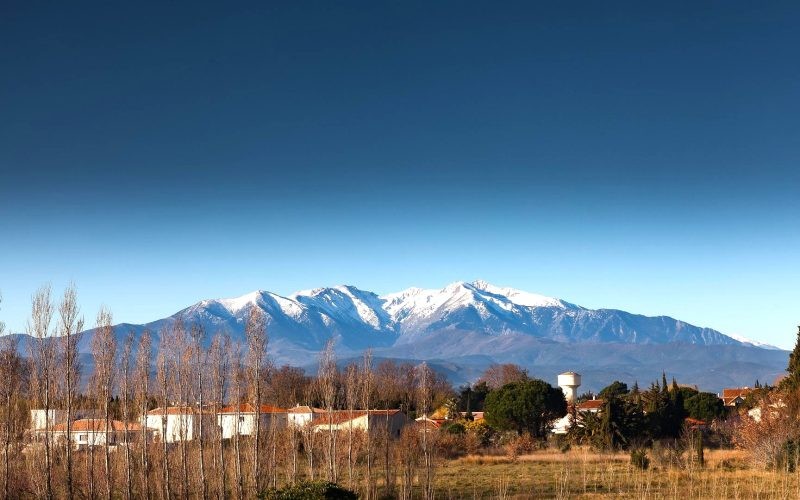 Le Canigou
Le Canigou
9. What Are The Best Times to Visit Pyrénées Orientales?
The best time to visit the Pyrénées Orientales depends on your interests and preferences. Here’s a seasonal guide:
- Spring (April-May): Mild temperatures, blooming flowers, and fewer crowds make spring a great time for hiking, cycling, and exploring the countryside.
- Summer (June-August): Hot and sunny weather attracts beachgoers and water sports enthusiasts. The region is also buzzing with festivals and events.
- Autumn (September-October): Warm days, cool nights, and stunning fall colors make autumn a picturesque time for hiking, wine tasting, and cultural activities.
- Winter (November-March): The ski resorts come alive in winter, offering downhill skiing, cross-country skiing, snowboarding, and snowshoeing.
According to weather statistics, July and August are the hottest and driest months in the Pyrénées Orientales, while December and January are the coldest and wettest.
10. How To Plan a Budget-Friendly Tourisme en Pyrénées Orientales Trip?
Tourisme en Pyrénées Orientales doesn’t have to break the bank. Here are some tips for planning a budget-friendly trip:
- Travel in the Off-Season: Prices for flights and accommodations are typically lower in the spring and autumn.
- Look for Deals and Discounts: Check websites like SIXT.VN for special offers on airport transfers, hotel bookings, and sightseeing tours.
- Eat Like a Local: Sample the region’s affordable cuisine by visiting local markets, bakeries, and cafes.
- Take Advantage of Free Activities: Explore the beaches, hike in the mountains, and wander through the historic centers for free.
- Use Public Transportation: The Pyrénées Orientales have a decent public transportation system, which can be a cheaper alternative to renting a car.
According to budget travel blogs, planning ahead, being flexible with your travel dates, and taking advantage of free activities are key strategies for saving money on your Tourisme en Pyrénées Orientales trip.
11. What Are Some Family-Friendly Activities in Pyrénées Orientales?
The Pyrénées Orientales are a great destination for families, with plenty of activities to keep kids of all ages entertained.
- Beaches: The long sandy beaches along the coast are perfect for building sandcastles, swimming, and playing in the waves.
- Aqualand: This water park in Saint-Cyprien offers a variety of slides, pools, and attractions for all ages.
- Réserve Africaine de Sigean: This wildlife park is home to over 3,800 animals, including lions, elephants, giraffes, and zebras.
- Le Train Jaune: This scenic train ride takes you through the Pyrenees mountains, offering stunning views of the countryside.
- Canyoning: A guide will take you through narrow canyons where you can rappel down cliffs and slide into natural pools.
According to family travel websites, the Pyrénées Orientales are a great destination for families, with a wide range of activities and attractions to keep everyone entertained.
12. How Do You Get Around in Pyrénées Orientales?
Navigating the Pyrénées Orientales is relatively easy, with several transportation options available:
- Car Rental: Renting a car gives you the most freedom to explore the region at your own pace. SIXT.VN offers a wide range of rental cars to suit every need and budget.
- Public Transportation: The Pyrénées Orientales have a network of buses and trains that connect the major towns and cities.
- Taxi: Taxis are available in most towns and cities, but they can be expensive.
- Bicycle: Cycling is a great way to explore the countryside, especially in the spring and autumn.
According to a survey by the Pyrénées Orientales Tourism Board, renting a car is the most popular way to get around the region, followed by public transportation and cycling.
13. What Are The Best Beaches in Pyrénées Orientales?
The Pyrénées Orientales boast a diverse coastline, with long sandy beaches, rocky coves, and charming seaside villages. Here are some of the best beaches in the region:
- Argelès-sur-Mer: A long sandy beach with plenty of amenities, including restaurants, cafes, and water sports rentals.
- Canet-en-Roussillon: A wide sandy beach with shallow waters, perfect for families with young children.
- Collioure: A charming beach nestled in the heart of the historic town, offering stunning views of the harbor and castle.
- Sainte-Marie-la-Mer: A quiet beach with a natural setting, perfect for those seeking peace and relaxation.
- Banyuls-sur-Mer: A rocky beach with crystal-clear water, ideal for snorkeling and diving.
According to beach review websites, Argelès-sur-Mer and Canet-en-Roussillon are consistently ranked as the top beaches in the Pyrénées Orientales, with visitors praising their cleanliness, amenities, and family-friendly atmosphere.
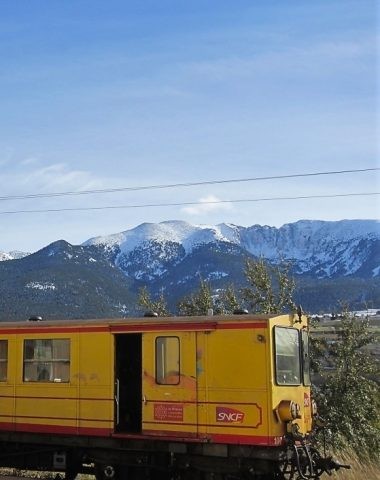 Villefranche de Conflent & le Train jaune
Villefranche de Conflent & le Train jaune
14. What Are Some Day Trip Ideas From Pyrénées Orientales?
The Pyrénées Orientales are a great base for exploring the surrounding region. Here are some day trip ideas:
- Barcelona, Spain: Just a two-hour drive from Perpignan, Barcelona is a vibrant city with world-class architecture, museums, and restaurants.
- Girona, Spain: This charming medieval city is known for its colorful houses, historic Jewish quarter, and stunning cathedral.
- Andorra: This small principality in the Pyrenees mountains is a popular destination for skiing, hiking, and duty-free shopping.
- Carcassonne: This fortified city is a UNESCO World Heritage site and one of the best-preserved medieval cities in Europe.
According to travel guides and blogs, these day trips offer a great way to experience the diversity and beauty of the region surrounding the Pyrénées Orientales.
15. What Events and Festivals Take Place in Pyrénées Orientales?
The Pyrénées Orientales are known for their lively events and festivals, celebrating everything from music and dance to food and wine. Here are some of the most popular events:
- Fêtes de Collioure: This annual festival in August celebrates the town’s patron saint with processions, music, and fireworks.
- Visa pour l’Image: This international photojournalism festival in Perpignan showcases the work of leading photographers from around the world.
- Cherry Festival: This festival in Céret celebrates the local cherry harvest with parades, tastings, and cultural events.
- Jazzèbre: This jazz festival takes place in various locations throughout the Pyrénées Orientales, featuring renowned musicians from around the world.
- Festival Pablo Casals: This classical music festival in Prades celebrates the life and work of the famous cellist.
According to the Pyrénées Orientales Tourism Board, these events and festivals attract thousands of visitors each year, contributing significantly to the region’s economy and cultural vibrancy.
16. What Safety Tips Should You Keep in Mind While Traveling in Pyrénées Orientales?
The Pyrénées Orientales are generally a safe destination, but it’s always wise to take precautions:
- Be Aware of Your Surroundings: Pay attention to your surroundings and avoid walking alone in poorly lit areas at night.
- Protect Your Valuables: Keep your valuables safe and out of sight, and be aware of pickpockets in crowded areas.
- Stay Hydrated: Drink plenty of water, especially during the summer months when temperatures can soar.
- Be Prepared for the Outdoors: If you’re planning on hiking or participating in other outdoor activities, be sure to bring appropriate clothing, footwear, and supplies.
- Learn Basic French Phrases: Knowing a few basic French phrases can be helpful in communicating with locals and navigating your way around.
According to travel advisories, the Pyrénées Orientales are considered a low-risk destination, but it’s always wise to be aware of your surroundings and take precautions to protect yourself and your belongings.
17. How Do You Prepare For a Hiking Trip in Pyrénées Orientales?
Hiking in the Pyrénées Orientales can be a rewarding experience, but it’s important to be prepared.
- Choose the Right Trail: Select a trail that is appropriate for your fitness level and experience.
- Check the Weather: Be sure to check the weather forecast before you head out, and be prepared for changing conditions.
- Wear Appropriate Clothing and Footwear: Wear comfortable, moisture-wicking clothing and sturdy hiking shoes or boots.
- Bring Plenty of Water and Snacks: Stay hydrated and energized by bringing plenty of water and snacks.
- Carry a Map and Compass: Even if you’re hiking on a well-marked trail, it’s always a good idea to carry a map and compass.
- Tell Someone Your Plans: Let someone know where you’re going and when you expect to be back.
According to hiking experts, being prepared and taking precautions can help you have a safe and enjoyable hiking experience in the Pyrénées Orientales.
 Tautavel
Tautavel
18. What Are The Best Souvenirs to Buy in Pyrénées Orientales?
Looking for the perfect souvenir to remember your trip to the Pyrénées Orientales? Here are some ideas:
- Banyuls Wine: This sweet fortified wine is a regional specialty.
- Catalan Pottery: Handcrafted pottery with colorful designs.
- Espadrilles: Traditional Catalan shoes made from canvas and rope.
- Rousquilles: A type of anise-flavored biscuit.
- Local Honey or Jams: Made from locally grown fruits and flowers.
According to souvenir guides, these items offer a taste of the Pyrénées Orientales’ culture and culinary traditions, making them the perfect mementos of your trip.
19. How Can You Learn More About The History and Culture of Pyrénées Orientales Before You Visit?
Immerse yourself in the rich history and culture of the Pyrénées Orientales before you even arrive! Here’s how:
- Read Books: Dive into historical accounts, novels set in the region, and cultural guides.
- Watch Documentaries: Explore the landscapes, traditions, and historical events through captivating documentaries.
- Online Resources: Websites like the official tourism board site, historical societies, and educational platforms offer a wealth of information.
- Virtual Tours: Embark on virtual tours of museums, historical sites, and landmarks to get a sneak peek.
- Language Learning: Learn a few basic Catalan phrases to enhance your cultural experience and connect with locals.
20. What Are The Key Differences Between The Coast and Mountain Regions of Pyrénées Orientales?
The Pyrénées Orientales offer a stunning contrast between the vibrant coast and the majestic mountains. Here’s a breakdown of their key differences:
| Feature | Coastal Region | Mountain Region |
|---|---|---|
| Landscape | Sandy beaches, rocky coves, seaside villages | Rugged peaks, lush valleys, forests |
| Activities | Swimming, sunbathing, water sports, beachcombing | Hiking, skiing, climbing, wildlife watching |
| Climate | Mediterranean, warm summers, mild winters | Alpine, cool summers, cold winters |
| Culture | Coastal traditions, fishing heritage | Mountain traditions, pastoral heritage |
| Accommodation | Hotels, resorts, beach rentals | Chalets, guesthouses, mountain huts |
21. What Travel Apps Are Useful For Visiting Pyrénées Orientales?
Enhance your trip to the Pyrénées Orientales with these handy travel apps:
- SIXT App: For easy car rentals and bookings in the region.
- Google Maps: Essential for navigation, finding attractions, and public transport directions.
- Météo France: Stay updated on weather forecasts for safe outdoor activities.
- Booking.com/Airbnb: Find and book accommodations to suit your budget and preferences.
- TripAdvisor: Discover reviews, recommendations, and insider tips from fellow travelers.
- Translate Apps: Communicate with locals by translating languages in real-time.
22. How Do You Experience Sustainable Tourism In Pyrénées Orientales?
Embrace responsible travel and minimize your impact on the Pyrénées Orientales by practicing sustainable tourism:
- Support Local Businesses: Shop at local markets, dine at family-run restaurants, and purchase regional products.
- Use Public Transportation: Opt for buses, trains, or bicycles to reduce your carbon footprint.
- Respect the Environment: Avoid littering, stay on marked trails, and minimize your use of water and energy.
- Choose Eco-Friendly Accommodations: Look for hotels and guesthouses that have sustainable practices in place.
- Learn About Local Conservation Efforts: Support organizations working to protect the region’s natural and cultural heritage.
23. What Are Some Phrases in Catalan That Would Be Helpful To Know?
Enhance your experience in the Pyrénées Orientales by learning a few basic Catalan phrases:
| Phrase | Translation |
|---|---|
| Bon dia | Good morning |
| Bona tarda | Good afternoon |
| Bona nit | Good night |
| Si us plau | Please |
| Gràcies | Thank you |
| De res | You’re welcome |
| Com estàs? | How are you? |
| Bé, gràcies | Fine, thank you |
| Quant costa? | How much does it cost? |
| On és…? | Where is…? |
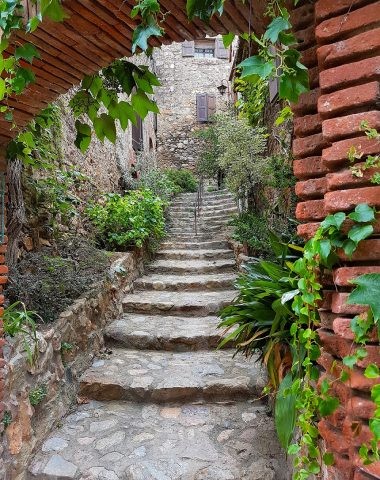 Castelnou
Castelnou
24. What Is The “Train Jaune” and Why Is It Worth Riding?
The “Train Jaune” (Yellow Train) is a narrow-gauge railway that winds its way through the Pyrenees mountains.
Why Is It Worth Riding?
- Stunning Scenery: The train offers breathtaking views of the Pyrenees mountains, valleys, and villages.
- Historical Significance: The train has been in operation since the early 20th century and is a symbol of the region.
- Unique Experience: Riding the open-air carriages is a thrilling and unforgettable experience.
- Access to Remote Areas: The train provides access to remote villages and hiking trails that are otherwise difficult to reach.
- UNESCO World Heritage Site: The railway is part of the UNESCO World Heritage Site of the Fortifications of Vauban.
25. What Are Some Popular Wines From Pyrénées Orientales To Try?
The Pyrénées Orientales are known for their diverse and flavorful wines. Here are some popular varieties to try:
- Banyuls: A sweet fortified wine, perfect for pairing with desserts or cheese.
- Côtes du Roussillon: A red wine with fruity and spicy notes.
- Côtes du Roussillon Villages: A more complex and structured red wine.
- Maury: A sweet fortified wine similar to Banyuls.
- Muscat de Rivesaltes: A sweet white wine with floral and fruity aromas.
26. How Can You Support Local Artisans and Businesses in Pyrénées Orientales?
Support the local economy and preserve traditional crafts by seeking out local artisans and businesses:
- Visit Local Markets: Discover handcrafted goods, regional products, and local produce.
- Shop at Artisan Workshops: Find unique souvenirs and support traditional crafts like pottery, weaving, and woodworking.
- Dine at Family-Run Restaurants: Enjoy authentic cuisine made with fresh, local ingredients.
- Stay at Guesthouses or Boutique Hotels: Experience local hospitality and support small businesses.
- Participate in Local Tours or Workshops: Learn about traditional crafts and support local artisans.
27. What Should You Know About Tipping Etiquette in Pyrénées Orientales?
Tipping is generally not expected in the Pyrénées Orientales, as service is usually included in the bill. However, it is customary to leave a small tip (5-10%) for exceptional service in restaurants, cafes, and taxis.
28. What Are Some Tips For Driving in Pyrénées Orientales?
If you plan to rent a car and drive in the Pyrénées Orientales, here are some tips to keep in mind:
- Familiarize Yourself With Local Traffic Laws: Be aware of speed limits, traffic signs, and parking regulations.
- Drive on the Right Side of the Road: France drives on the right side of the road.
- Be Prepared for Narrow and Winding Roads: Many roads in the mountains are narrow and winding, so drive carefully and be prepared to yield to oncoming traffic.
- Watch Out for Cyclists and Pedestrians: Be aware of cyclists and pedestrians, especially in towns and villages.
- Parking Can Be Limited: Parking can be limited in some areas, especially during peak season, so be prepared to walk.
29. What Are Some Lesser-Known Historical Sites To Visit In Pyrénées Orientales?
Beyond the well-known landmarks, discover the hidden historical gems of the Pyrénées Orientales:
- Forteresse de Salses: A 15th-century fortress on the border of France and Spain, offering a glimpse into the region’s military history.
- Château de Quéribus: A mountaintop castle that was one of the last strongholds of the Cathars.
- Abbaye de Saint-Martin du Canigou: A historic abbey perched on a cliffside, offering stunning views of the surrounding landscape.
- Villefranche-de-Conflent: A UNESCO world heritage site that offers a glimpse into what life was like in the 17th century.
- Ille-Sur-Têt Orgues: A geological feature which offers a glimpse into what happened to the area over 5 million years ago.
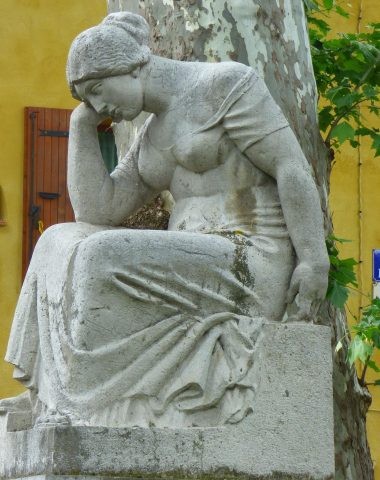 Céret
Céret
30. How Do You Say “Pyrénées Orientales” In Catalan?
In Catalan, “Pyrénées Orientales” is translated as “Pirineus Orientals.”
31. What Are Some Tips For Visiting Local Markets in Pyrénées Orientales?
Immerse yourself in the local culture and find unique treasures at the markets of the Pyrénées Orientales:
- Go Early: Arrive early for the freshest produce and a less crowded experience.
- Bring Cash: Many vendors may not accept credit cards.
- Bargain Respectfully: It’s acceptable to bargain, but do so politely.
- Sample Local Products: Don’t be afraid to try local cheeses, olives, and other delicacies.
- Bring Your Own Bag: Reduce plastic waste by bringing your own reusable shopping bag.
32. How To Plan a Romantic Getaway In Pyrénées Orientales?
The Pyrénées Orientales provide an idyllic setting for a romantic escape. Consider these tips:
- Choose a Charming Accommodation: Select a boutique hotel or guesthouse with a romantic ambiance.
- Dine at Intimate Restaurants: Enjoy candlelit dinners at restaurants with stunning views.
- Explore Picturesque Villages: Wander hand-in-hand through the narrow streets of Collioure or Villefranche-de-Conflent.
- Relax on Secluded Beaches: Find a quiet cove and enjoy a picnic lunch by the sea.
- Take a Scenic Hike: Explore the mountains and enjoy breathtaking views.
- Visit Wine Cellars: Discover the romance that the area has to offer.
33. How Can SIXT.VN Help With Group Travel in Pyrénées Orientales?
Planning a trip for a large group? SIXT.VN simplifies group travel in the Pyrénées Orientales with:
- Airport Transfers: Arrange airport transfers for your entire group.
- Hotel Bookings: Find accommodations for large groups.
- Sightseeing Tours: Discover the top attractions with guided tours.
- Car Rental: Rental cars to suit every need and budget.
- Custom Itineraries: We can custom design any itinerary you wish to have for your group travel.
34. FAQ About Tourisme en Pyrénées Orientales
- What is the best time to visit the Pyrénées Orientales? The best time to visit depends on your interests, with spring and autumn offering mild weather and fewer crowds, summer being ideal for beaches and water sports, and winter perfect for skiing.
- What are some must-see attractions in the region? Must-see attractions include Collioure, Perpignan, Villefranche-de-Conflent, Mont Canigou, and the Côte Vermeille.
- What are some popular outdoor activities? Popular outdoor activities include hiking, cycling, water sports, skiing, and canyoning.
- What are some local culinary specialties? Local culinary specialties include bullinada, cargolade, rouget, and banyuls wine.
- What are some hidden gems in the Pyrénées Orientales? Hidden gems include the Ermitage Notre-Dame de Vie, Gorges de Galamus, and Abbaye Sainte-Marie d’Arles-sur-Tech.
- How do I get around in the Pyrénées Orientales? You can get around by car rental, public transportation, taxi, or bicycle.
- What are some tips for planning a budget-friendly trip? Tips for a budget-friendly trip include traveling in the off-season, looking for deals and discounts, eating like a local, and taking advantage of free activities.
- Are the Pyrénées Orientales safe for tourists? The Pyrénées Orientales are generally safe for tourists, but it’s always wise to take precautions.
- What language do they speak in Pyrénées Orientales? In addition to French, Catalan is also spoken in the Pyrénées Orientales.
- How can SIXT.VN enhance my trip to the Pyrénées Orientales? SIXT.VN can enhance your trip with airport transfers, hotel bookings, sightseeing tours, and customized itineraries.
Are you ready to embark on an unforgettable adventure in the Pyrénées Orientales? Let SIXT.VN be your trusted partner in planning the perfect trip. Contact us today to learn more about our services and start creating your dream itinerary. Address: 260 Cau Giay, Hanoi, Vietnam. Hotline/Whatsapp: +84 986 244 358. Website: SIXT.VN.



